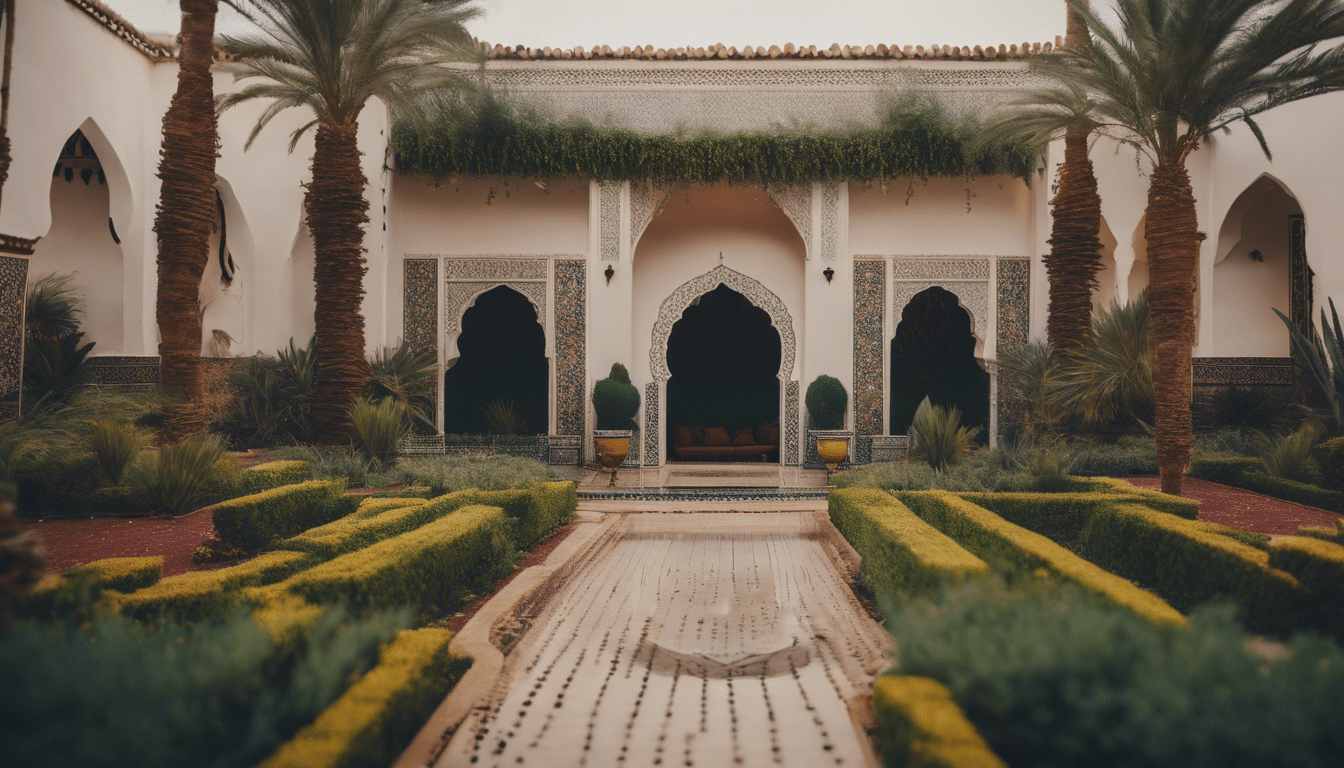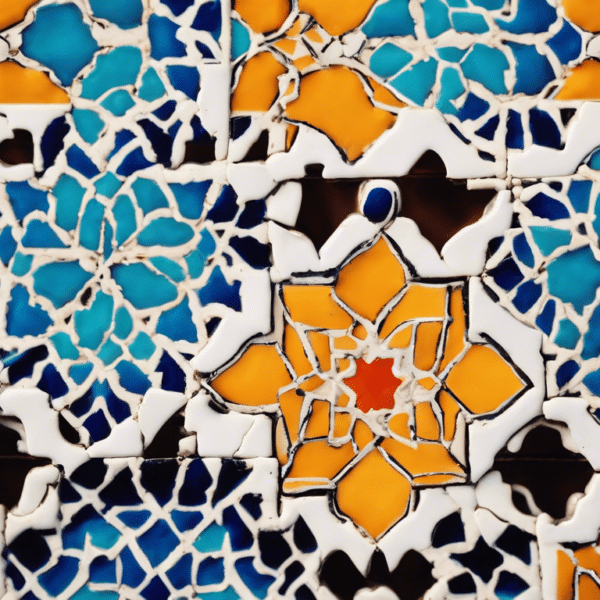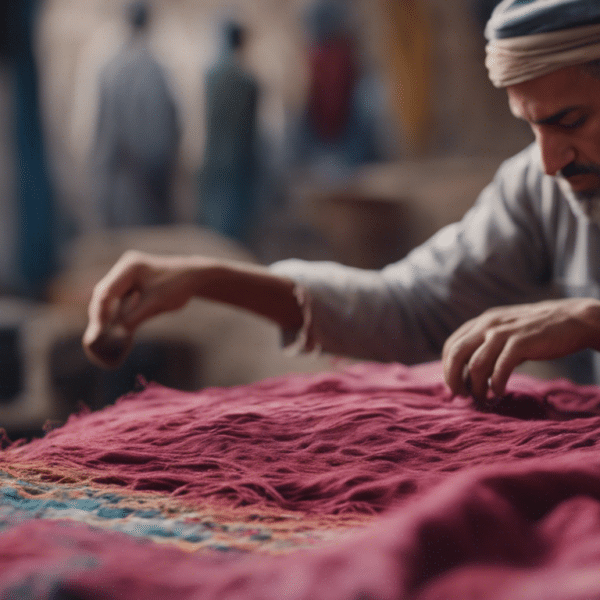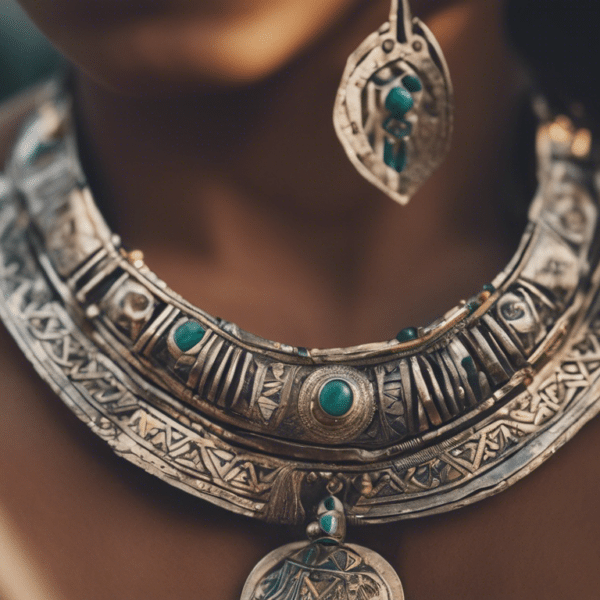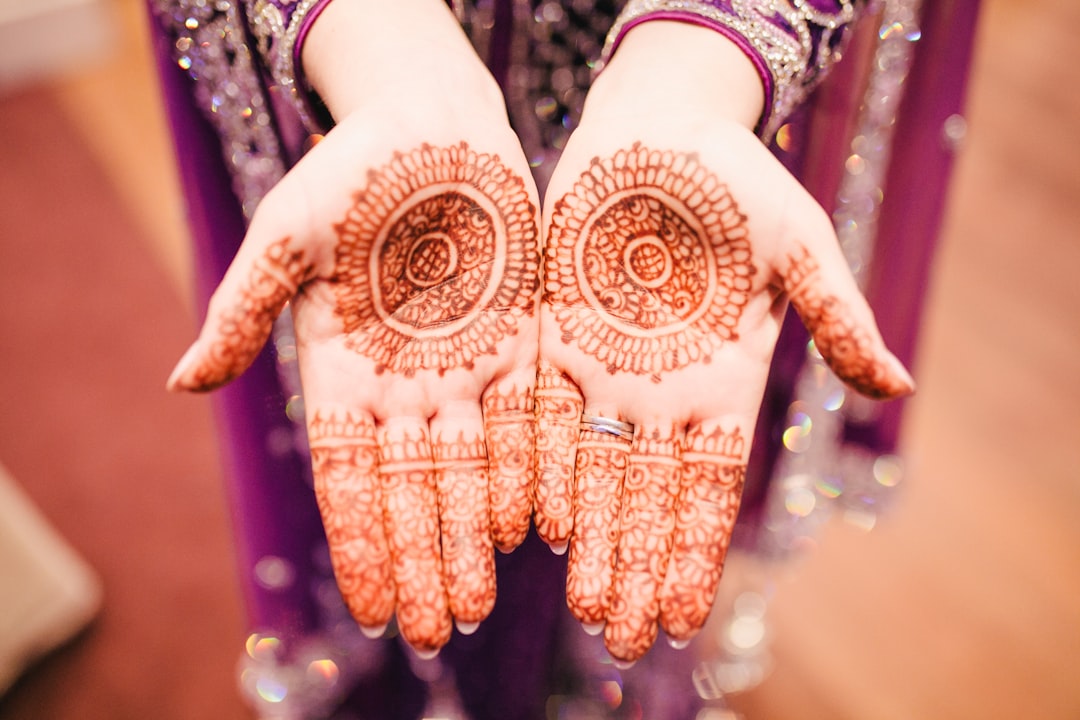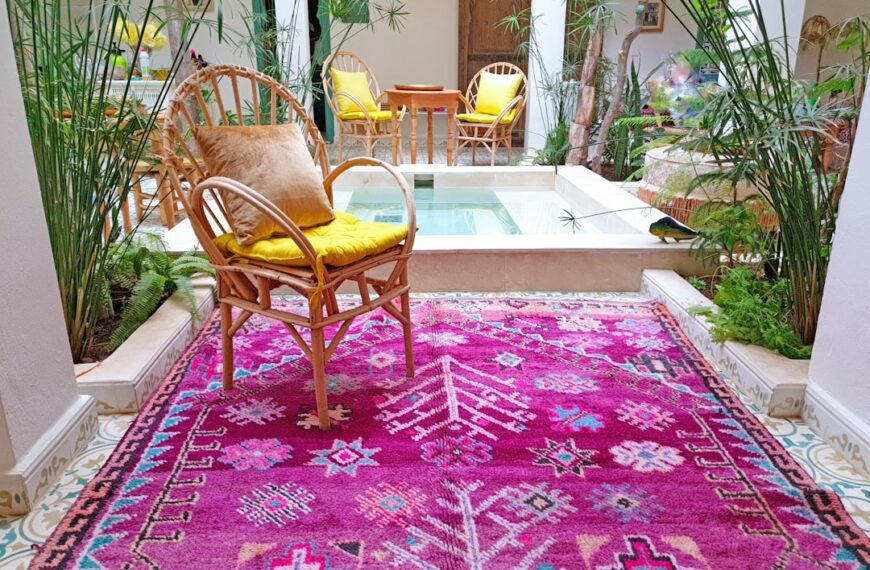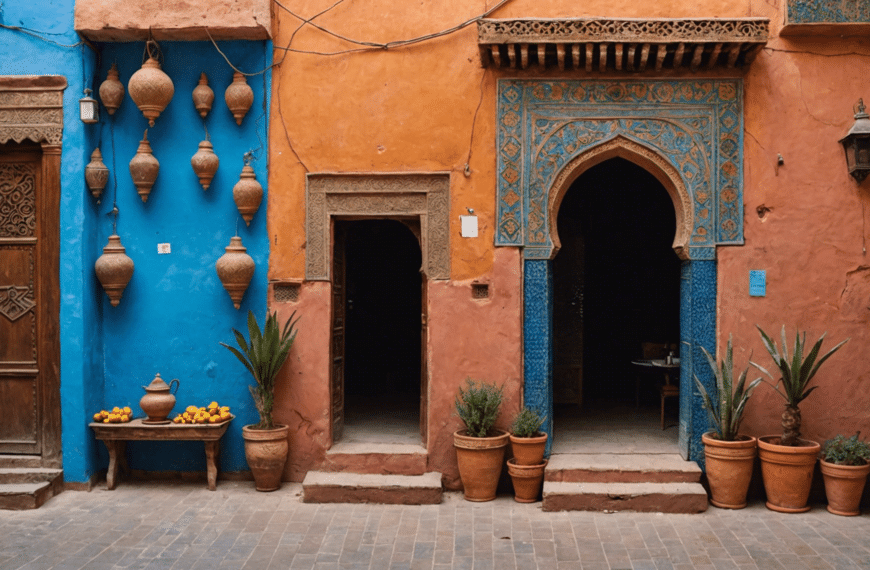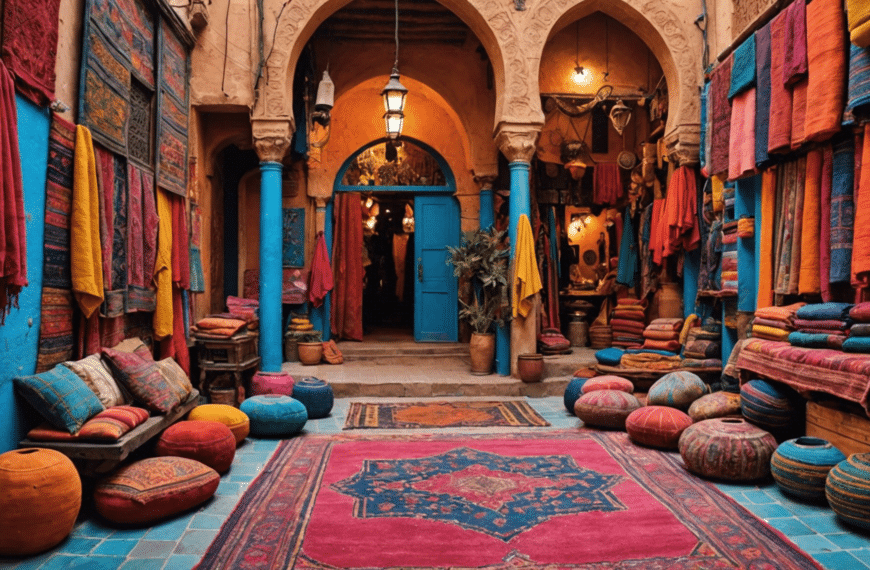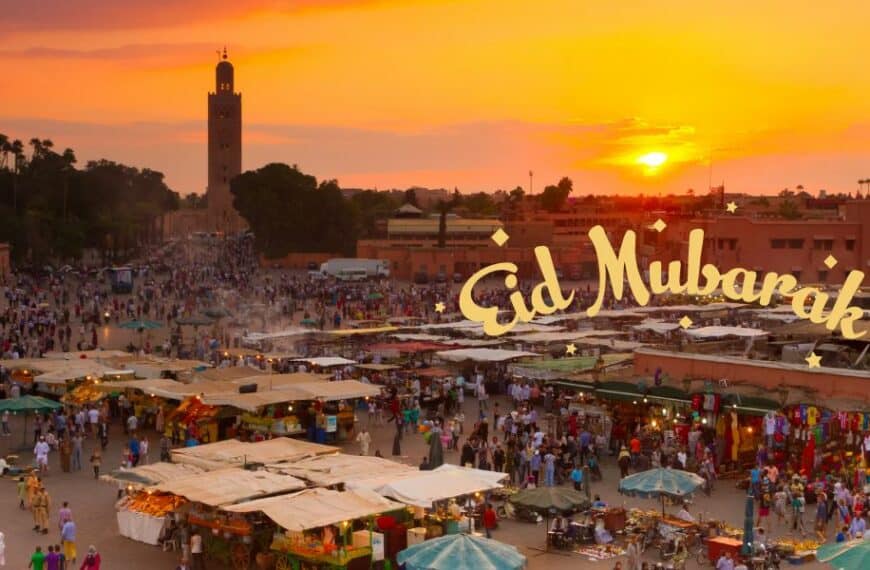In the heart of bustling Marrakech, there exists a world of tranquil beauty, an emerald enclave where serenity reigns supreme. Let’s take an enchanted journey into the alluring Moroccan gardens, those hushed havens that tastefully blend the vibrant colors, intricate designs, and fragrant aromas. Here, time-honored horticultural artistry creates an oasis of peace, capturing the essence of beauty and tranquility amidst the exuberance of life. Join me as we uncover the secrets of their timeless charm and the whispers of history that rustle through their olive groves and orange trees, in a dance with the gentle murmur of trickling fountains. Welcome to a realm where every intricate tile and carefully pruned branch tells a story of culture, art, and nature in harmonious conversation. Join us on this lush exploration, and you might just find a piece of calm to carry with you, long after we bid these gardens farewell.
Exploring the Magic of Moroccan Gardens
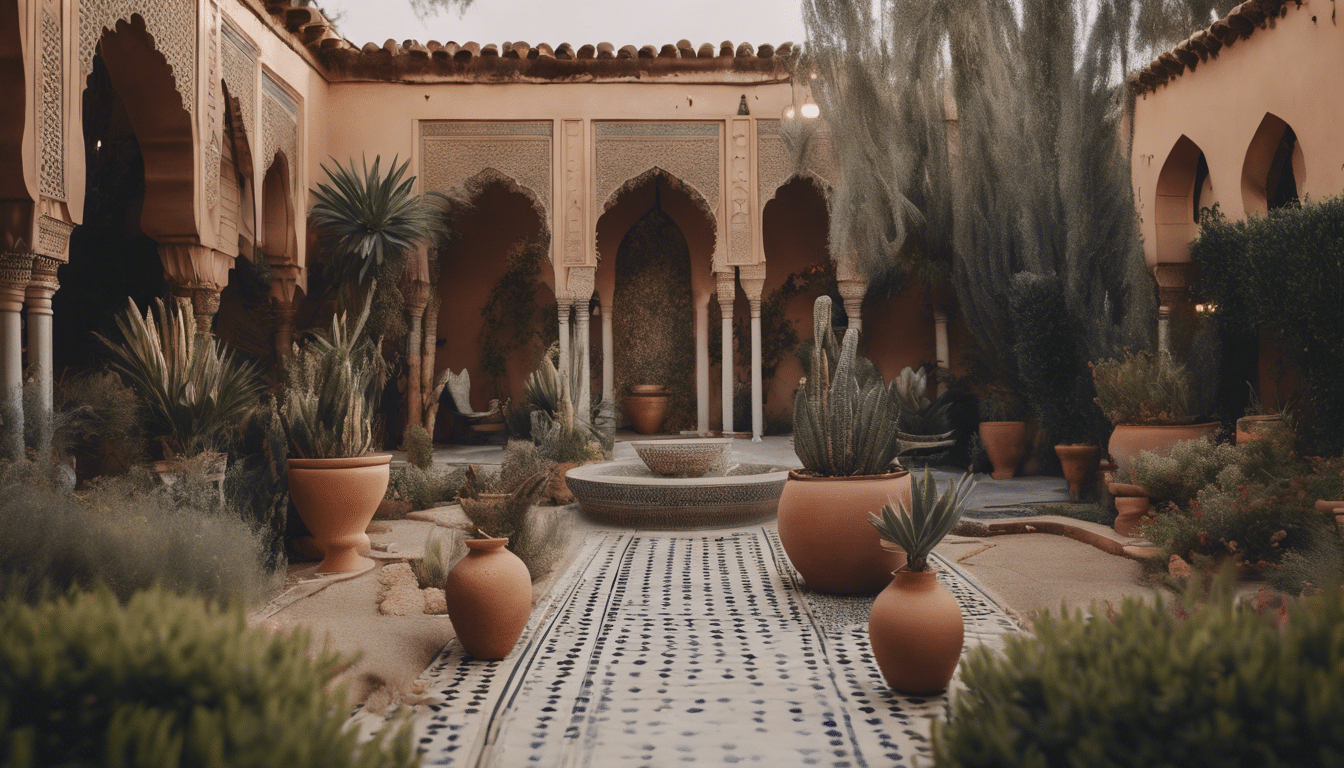
Step into the verdant embrace of a Moroccan garden, where the air is perfumed with the scent of jasmine and the murmur of flowing water underlines the tranquil atmosphere. In Morocco, gardens are not just spaces for plants and flowers; they are sanctuaries of peace, reflections of paradise, and expressions of an intricate culture, deeply rooted in history.
The essence of these gardens stretches beyond the mere visual beauty; they embrace the soul of Moroccan art and architecture. As you wander through, the harmonious blend of design and nature becomes evident—an intertwining of the rustic and the regal, a tapestry of colors and textures that invites both awe and introspection.
Among the greenery, traditional Moroccan elements stand out. The majestic palm trees soaring high, the intricate zellige tilework lining the paths, the elegant Andalusian arches, and the rhythmic flow of fountains—all tell a story of a world that honors the balance between man-made and natural beauty.
The Haven of Serenity
Embark on a journey through the serene pathways of a Moroccan garden, where each turn unveils a new vista, a new shade of tranquility. The garden’s layout is designed to guide you through an experience that engages all senses. The gentle rustling of leaves, the sweet fragrance that fills the air, and the stunning visual display of color are orchestrated to bring harmony to the mind and soul.
In the midst of the bustling medinas and the vivid desert landscapes, these gardens provide a haven of calm, a place to retreat and reflect. They serve as a reminder of the Moroccan tradition of inviting nature into daily life and the importance placed on creating spaces for solitude and contemplation.
The Artistry of Flora
Moroccan gardens are a celebration of flora, where native and exotic species mingle effortlessly. Orange blossoms, rosemary hedges, fig and olive trees—these are but a few green jewels set within the earthen walls. The selection and arrangement of plants are intentional, representing fertility, life, and the sweet fragrance that is synonymous with the Magic of Moroccan Gardens.
As you traverse these enchanted settings, you may spot rare botanical treasures, artfully trimmed hedges, and vibrant bursts of flowers. Each garden boasts its unique charm, a personal reflection of its creator, inviting a sense of discovery and delight at every corner.
Reflections of Culture and Spirit
More than just a feast for the eyes, Moroccan gardens embody the spirit of the nation and its people. The thoughtful placement of shaded seating areas, intimate corners for conversations, and spacious courts for gatherings, all speak to the Moroccan value of hospitality and community.
The meticulous care poured into these spaces also mirrors the spiritual core of Moroccan life. The use of water, a precious and life-sustaining element in desert climates, is particularly vital, symbolizing purity and the flow of life. It’s not unusual for these gardens to be anchored by a central water feature, which serves as both a focal point and a gathering place.
Preservation and Education
In recent years, the recognition of the importance of these garden spaces has grown, not only for their beauty but also for their role in preserving the history and education of Moroccan culture. Many gardens are now places of learning, where one can delve into the rich history of Moroccan horticulture, traditional agricultural practices, and the sustainable use of resources.
These green spaces double as outdoor classrooms and conservation areas, highlighting the need to protect the diverse ecosystem and the heritage they represent. They are a testament to the country’s agricultural innovations and the ancestral wisdom that has cultivated the land for generations.
Within the realm of Moroccan gardens, there exists a magical blend of function, beauty, and culture. They stand as verdant oases in the heat, places of learning, and beautiful tributes to the depth and diversity of Morocco’s rich traditions.
The Essence of Beauty in Moroccan Landscape Design
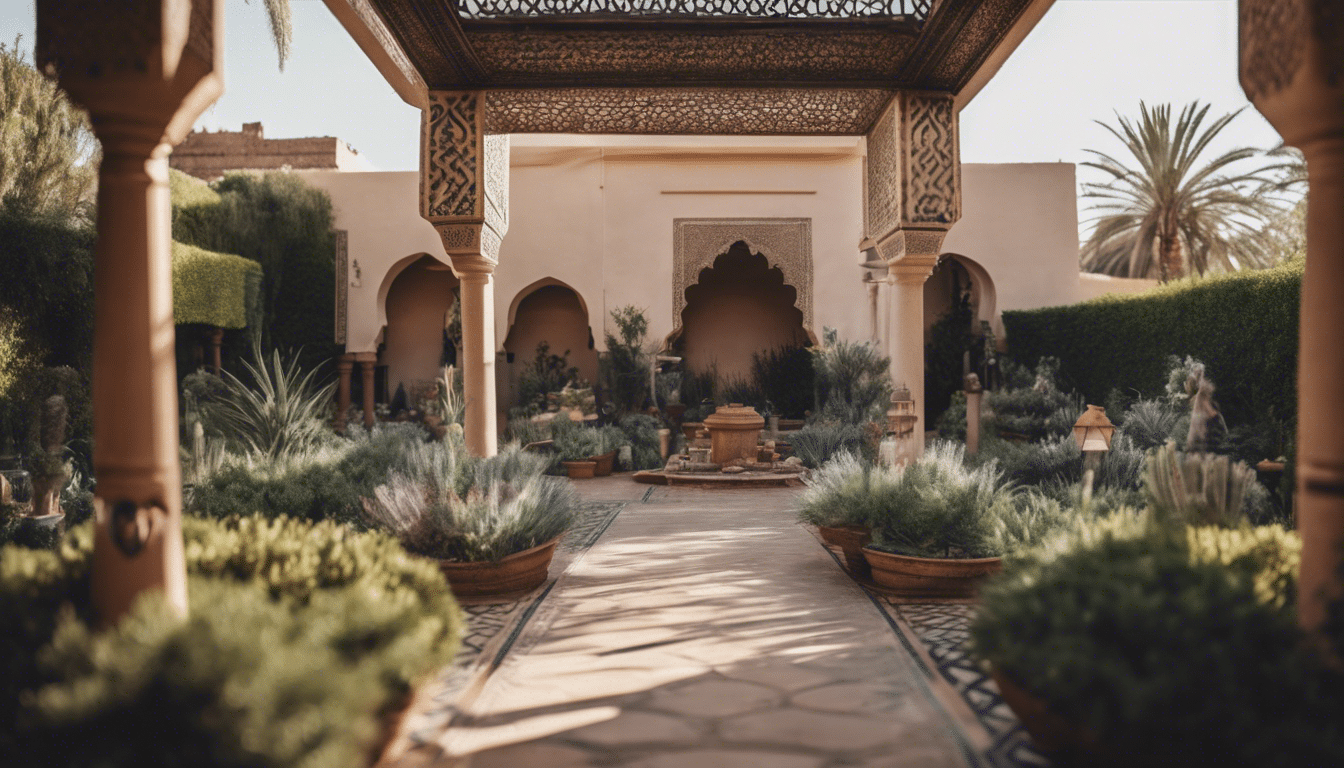
The moment you step into a traditional Moroccan garden, you are transported into a world where the chaos of daily life dissipates, replaced by serenity and the harmonious blend of nature and artistry. The beauty in Moroccan landscape design is unparalleled, a true testament to the aesthetic values and cultural riches that have evolved over centuries. From vibrant greenery to intricate water features, these gardens are not just a display of horticultural prowess; they are the heartbeats of Moroccan tranquility and reflection.
Morocco’s botanical oases command attention—an escape from the sun-drenched streets into cool, fragrant havens. Let’s unravel the threads of beauty woven into these verdant spaces and discover why they’re pivotal to the country’s ambience.
Architectural Symmetry and Nature’s Whimsy
Balancing the rigor of architecture with the whimsical, untamed spirit of nature, Moroccan gardens are a dance of symmetry and spontaneity. Keyhole arches and geometric pathways impose order, while unpredictable blooms and foliage suggest a gentle yielding to nature. This interplay is the baseline of Moroccan garden design, a duality that mirrors the country’s complex identity.
Sensory Journey Through Foliage and Water
The intersection of elements in a Moroccan garden is a sensory journey. Olive trees, palms, and fruit-bearing groves provide both shade and sustenance. Water – elemental and sacred – flows in the form of delicate streams, reflective pools, and grand fountains, their playful murmur a soundtrack to reflection and peace. The sensation of water on skin, the rustle of leaves in the breeze, the sweet fragrance of jasmine—it all contributes to a garden’s restorative powers.
Colors That Speak of Earth and Sky
The color palette of Moroccan gardens evokes the spectrum of the land itself—ochre walls, blue majorelle, dusky pinks, and the lush greens of diverse vegetation. Within these confines, the sky becomes a dramatic ceiling to nature’s living room, with hues subtly shifting from dawn until dusk, casting an ever-changing light on the botanicals below.
The Art of Zellij and Beyond
Moroccan gardens also celebrate the art of zellij—ceramic tile work that adorns walls, pathways, and water features. Intricate patterns and mosaics bring a tactile dimension that contrasts the natural growth patterns of the plants. And not just zellij, but beautifully rendered calligraphy and painted woodwork contribute to the garden’s aesthetic, a reminder of the human touch that curates and fosters this natural gallery.
Cultural Symbolism in Flora
Symbolism is rooted deeply in the choice of plants. Orange and lemon trees speak of fertility and abundance, while roses are planted for love and beauty. Even herbs hold meaning—mint for hospitality and lavender for purity. Each plant is chosen not just for its aesthetic value but for its ability to tell the story of Moroccan culture.
The Gardens as Social Hubs
Moroccan gardens are not merely for solitary enjoyment; they are social hubs too. Families and friends gather, conversations ebb and flow like the water features central to these spaces. The design often includes alcoves and secluded areas to nurture privacy, yet maintains an openness that invites communal interaction.
Sustaining Beauty: Conservation Efforts
While we marvel at the existing beauty, there’s a growing emphasis on sustainability in contemporary Moroccan garden design. Efforts to conserve water, support local flora, and protect biodiversity are becoming integral to the narrative—ensuring these spaces continue to flourish for generations to come.
Each stroll through a Moroccan garden is a passage through time, an exploration of senses, and a communion with nature and culture. These landscapes are more than mere segments of greenery; they are the soulful expressions of Moroccan art, history, and life. As the world becomes increasingly urbanized, the gardens of Morocco stand as serene sentinels, safeguarding the essence of beauty in the Moroccan landscape.
Incorporating Water: A Symbol of Life and Refreshment
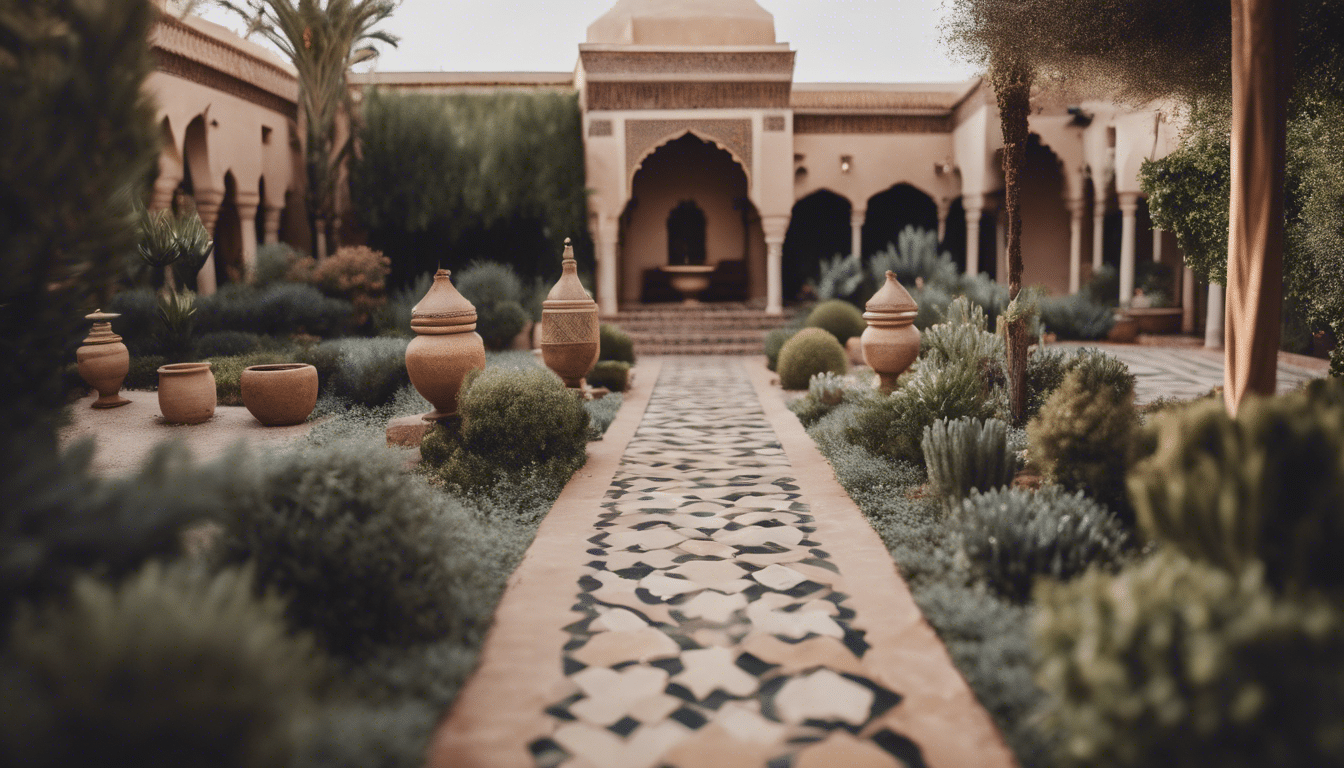
In the warm embrace of Morocco, where the sun bakes the earth and the air whispers tales of the Sahara, there is a celebration of life’s most vital element: water. The traditional Moroccan gardens are a testament to the ingenious ways in which this desert land has thrived, transforming necessity into an art form that pleads with the senses.
Tucked away behind sun-kissed walls and vibrant medinas, the gardens are an oasis of tranquility, a soothing balm to the bustling life outside. The thoughtful incorporation of water makes them not just a sight to behold but a narrative of cultural reverence to the life-giving liquid. With each ripple, the story of sustenance and refreshment unfolds, reminding all who enter the importance of this precious resource.
The Integrative Role of Water Features
In Moroccan landscaping, water is more than a mere element; it’s a central character. From still reflective pools to lively fountains, water features serve both aesthetic and practical purposes. The visual impact is immediate, the sight and sound of flowing water breathe coolness into the arid clime, and the reflective surfaces create a sense of spaciousness and light.
But beyond the sensory pleasure, these features have a deeper significance. They are meticulously designed to capture and distribute water efficiently, an homage to the ingenious agricultural practices of the ancestors. The strategic placement of channels, known as ‘khettara,’ is a marvel of ancient hydrological engineering, ensuring every drop is used to sustain the garden’s lush greenery.
Symbolism and Serenity in Water Gardens
Dive deeper into the heart of these sanctuaries, and one finds that water is imbued with profound symbolism. In Islamic culture, water represents cleanliness and life, and by extension, the presence of water in Moroccan gardens is a reflection of spiritual cleansing and renewal. It’s no surprise then that these gardens are often found in proximity to mosques, reinforcing the sacredness of water.
In the still mirrors of ponds, one catches a glimpse of infinity, an invitation to meditation and contemplation. The harmonious sound of water from a centrally located fountain is not just pleasant acoustics; it emanates the balance of the four elements believed to constitute life—earth, water, air, and fire. For those seeking a moment’s respite from the world, these gardens offer serenity and a gentle reminder of life’s simplicity and purity.
A Walk Through Verdant Paths
Strolling through the verdant pathways, observers are enveloped by an array of plants that thrive in the Moroccan climate, often requiring little water. Palms sway gently, offering shade, while citrus trees punctuate the air with a zesty tang. These botanical choices are no accident—they are carefully selected to complement the presence of water, creating a lush environment that, paradoxically, thrives on the conservation of moisture.
Practical Applications in Modern Landscaping
Contemporary garden designers draw inspiration from the Moroccan model, applying its lessons to landscapes worldwide. In areas where the conservation of water is paramount, Moroccan techniques offer beautiful yet sustainable solutions. Incorporating native, drought-resistant flora, optimizing irrigation, and leveraging natural gradients for water flow are practices born from the Moroccan example.
For those enchanted by the elegance and utility of Moroccan gardens, replicating these water features at home can be both a tribute to a rich cultural heritage and a wise environmental choice. Integrating water as both ornament and instrument serves as a poignant reminder—water is not just an element to be enjoyed but a resource to be revered and conserved.
In a world increasingly parched for solutions to water scarcity, the Moroccan garden stands as a symbol of hope, beauty, and ingenious adaptation. Oases in their right, these spaces enchant, inspire, and teach, offering a refreshing sip of life’s undying spring, long may it flow.

